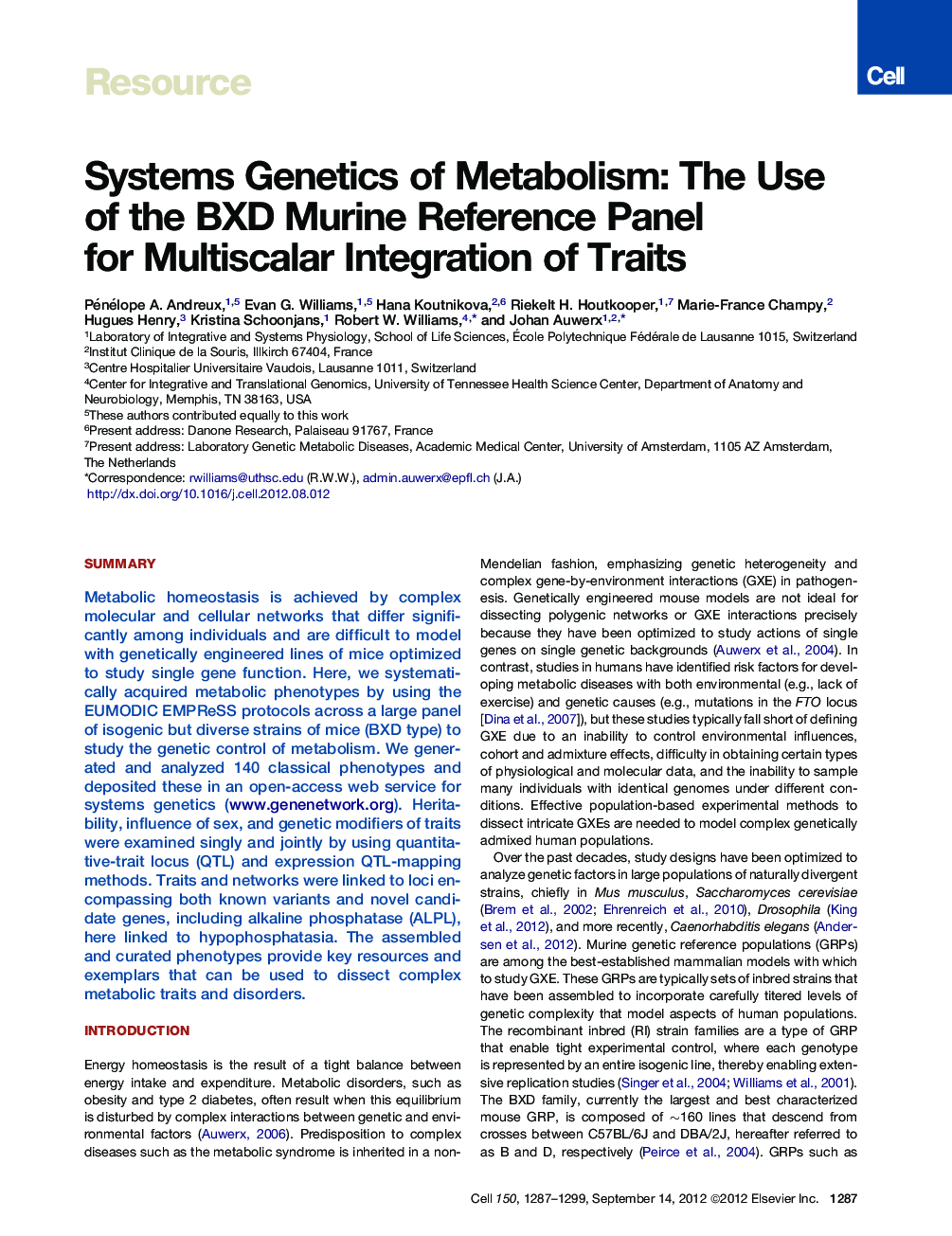| کد مقاله | کد نشریه | سال انتشار | مقاله انگلیسی | نسخه تمام متن |
|---|---|---|---|---|
| 2035955 | 1543097 | 2012 | 13 صفحه PDF | دانلود رایگان |

SummaryMetabolic homeostasis is achieved by complex molecular and cellular networks that differ significantly among individuals and are difficult to model with genetically engineered lines of mice optimized to study single gene function. Here, we systematically acquired metabolic phenotypes by using the EUMODIC EMPReSS protocols across a large panel of isogenic but diverse strains of mice (BXD type) to study the genetic control of metabolism. We generated and analyzed 140 classical phenotypes and deposited these in an open-access web service for systems genetics (www.genenetwork.org). Heritability, influence of sex, and genetic modifiers of traits were examined singly and jointly by using quantitative-trait locus (QTL) and expression QTL-mapping methods. Traits and networks were linked to loci encompassing both known variants and novel candidate genes, including alkaline phosphatase (ALPL), here linked to hypophosphatasia. The assembled and curated phenotypes provide key resources and exemplars that can be used to dissect complex metabolic traits and disorders.
Graphical AbstractFigure optionsDownload high-quality image (204 K)Download as PowerPoint slideHighlights
► The BXD family of strains is a powerful resource for systems genetics
► We recorded 140 key clinical metabolic parameters in this reference population
► The BXD family varies significantly for glucose tolerance and energy regulation
► Data were analyzed in terms of heritability, sex effect, and genetic determinants
Journal: - Volume 150, Issue 6, 14 September 2012, Pages 1287–1299